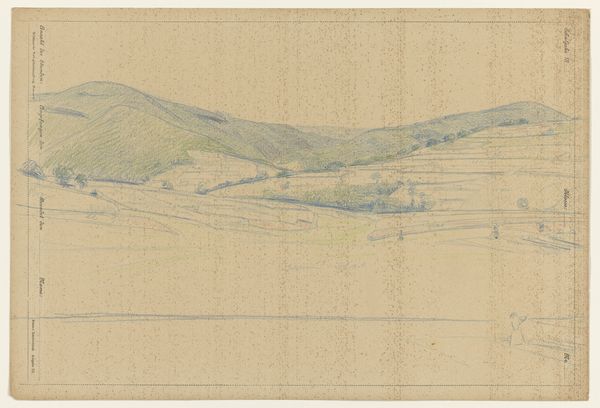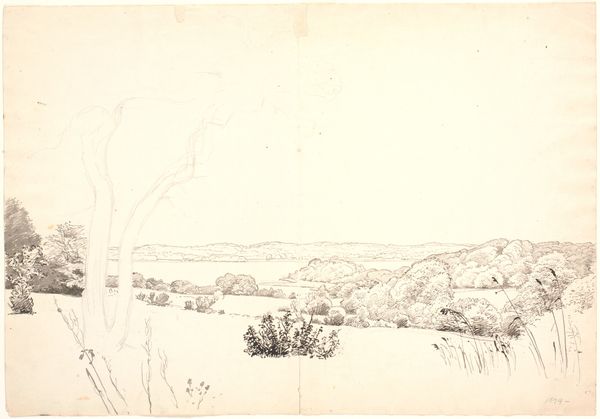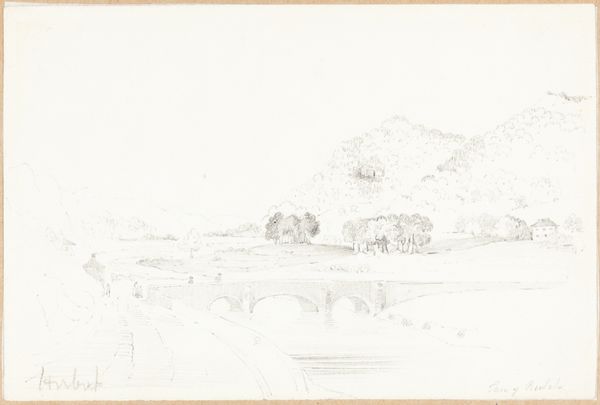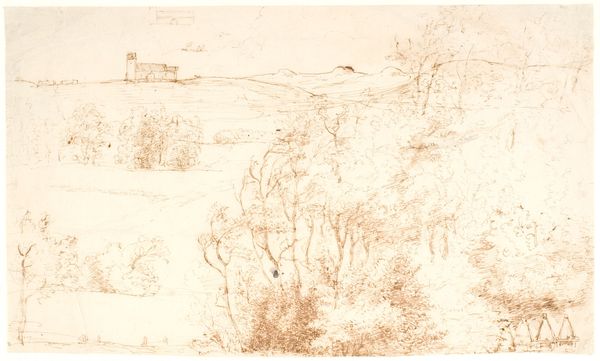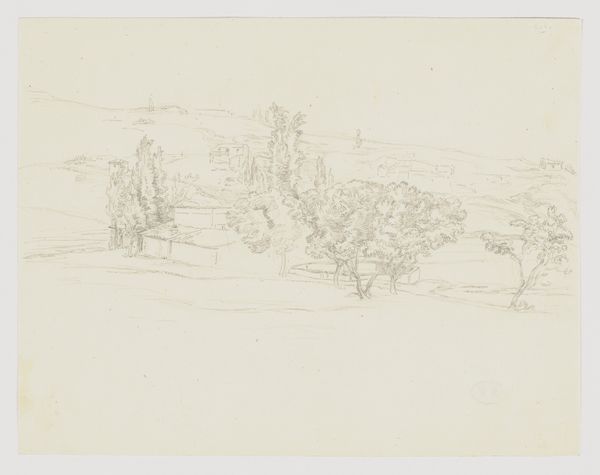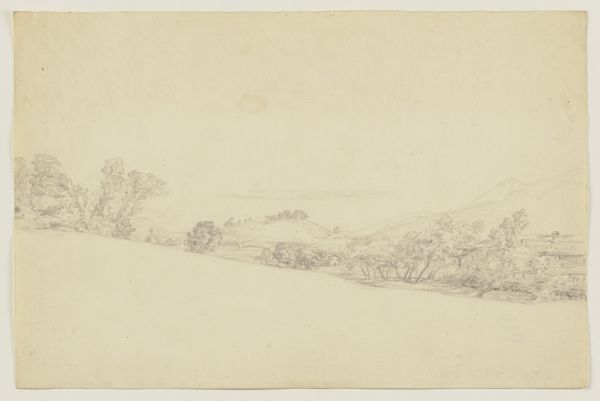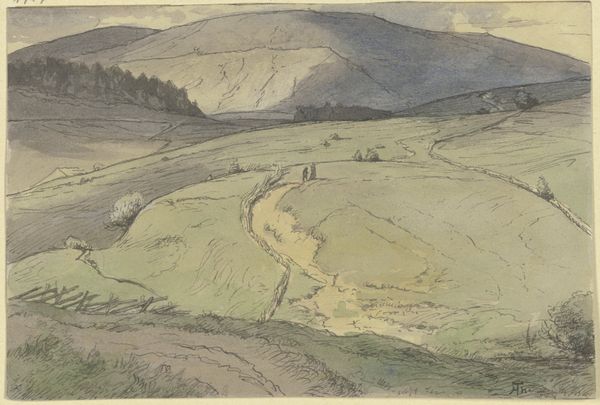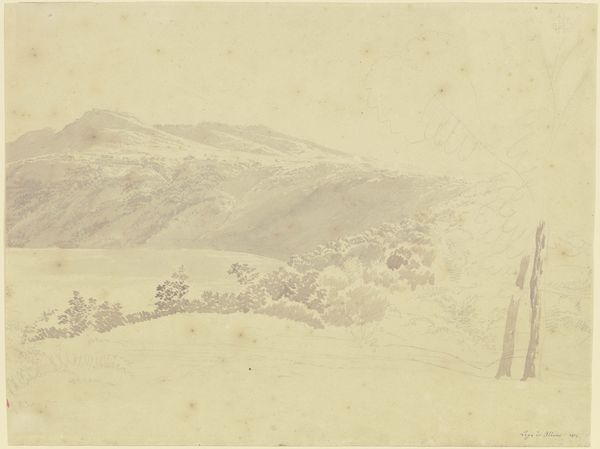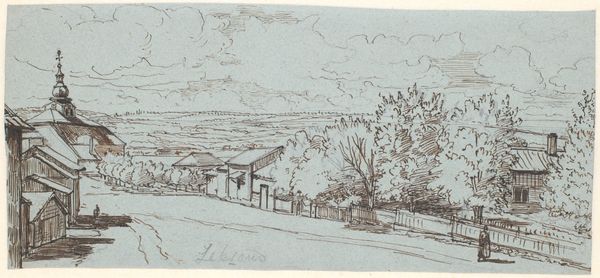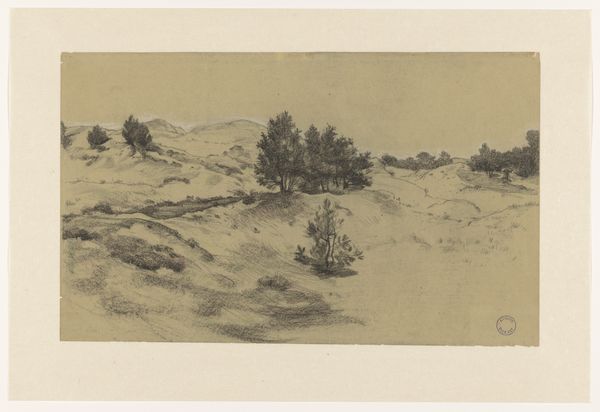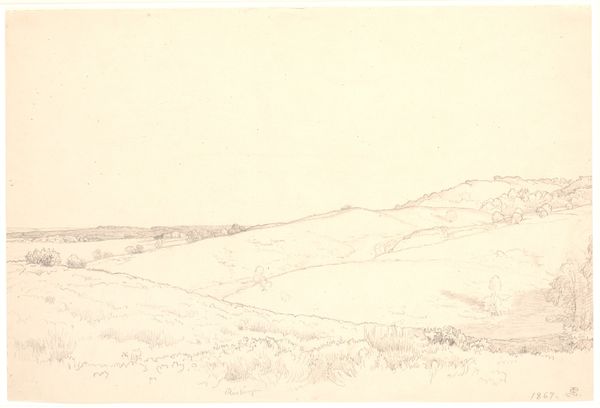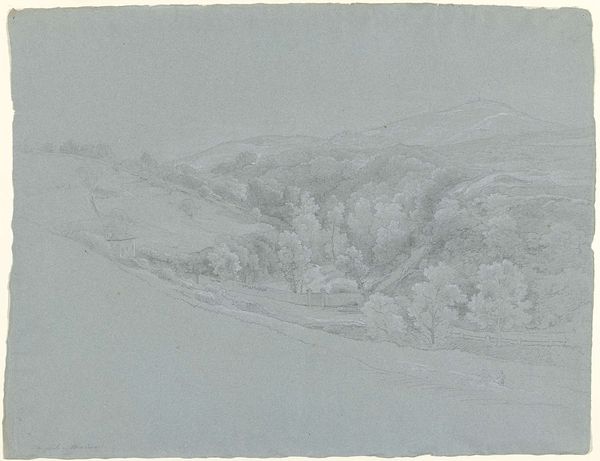
Dimensions: height 347 mm, width 511 mm
Copyright: Rijks Museum: Open Domain
Ferdinand Hart Nibbrig made this pencil drawing, "Landschap in de Eifel," meaning "Landscape in the Eifel," in the late 19th or early 20th century. It gives us a glimpse into the social and cultural context of landscape art at that time. Nibbrig’s drawing is rendered in a quick, sketch-like manner, capturing a scene in the Eifel region, a rural area in western Germany. The choice of such a locale reflects a broader interest in the countryside that grew with industrialization. Artists often sought to capture the perceived authenticity of rural life as a reaction to the rapidly changing urban environments. This interest was influenced by cultural movements that idealized nature as a source of national identity and moral purity. For art historians, analyzing this drawing means delving into the cultural values and anxieties of the time. Archival materials, such as exhibition catalogs and artists' letters, can help reveal the cultural debates around landscape art and its role in shaping national identity. In this way, the interpretation of art is inseparable from its broader historical context.
Comments
No comments
Be the first to comment and join the conversation on the ultimate creative platform.
